Life on the International Space Station
Some tasks—like cooking, personal hygiene and working are hard enough to do on Earth—imagine doing it in zero gravity.
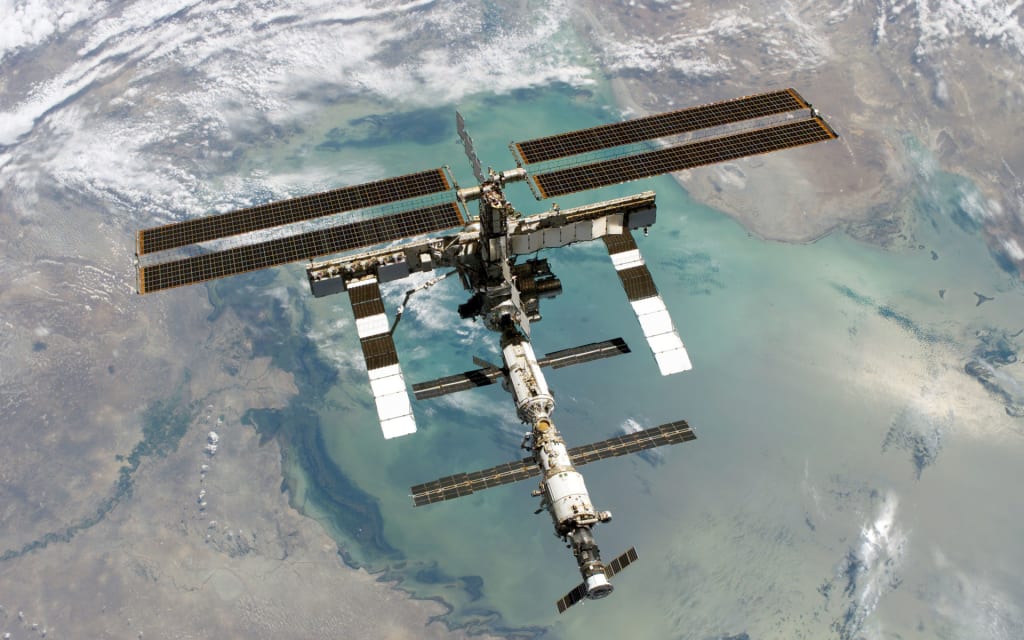
The International Space Station, or ISS for us lazy folk, circles the Earth in low orbit many times a day, performing varying scientific researches and occasionally hosting some awesome live-streams. But, what happens on a day-to-day basis? We see the big news of new astronauts reaching it for the first time, or staying the longest, or singing from within, but what happens on a normal day? Here’s what NASA say.
Morning Routine
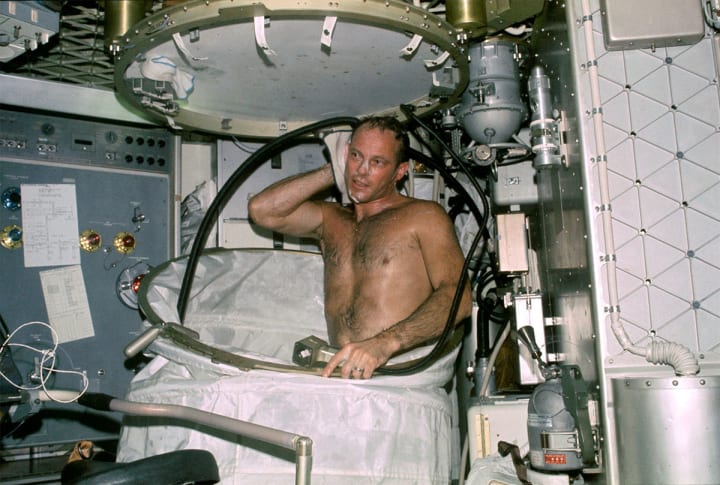
As we do on Earth, astronauts living and working onboard the ISS have to maintain a good hygiene level. This, of course, includes washing their hair, brushing their teeth, shaving and going to the bathroom.
This would be simple, ignoring the fact that everything occurs in zero gravity. As a result, they have to wash their hair with a ‘rinseless’ shampoo, sort of like the dry shampoo popular today or those use in hospitals for those unable to rinse their hair.
As for the toilet issue, the astronauts rely on many ‘vacuum cleaner’ type modifications to ensure nothing nasty floats around. The toilet features varying vacuums and fans to suck waste into the commode, whilst urinals are basically the astronaut’s personal funnel attached to a hose.
They also have their own generalized personal hygiene kit, where the astronaut can choose their preferred toothpaste, razor and other such equipment. Everything is kinda the same as Earth, ignoring the creepy vacuum toilets and floating poops.
Eating in Space
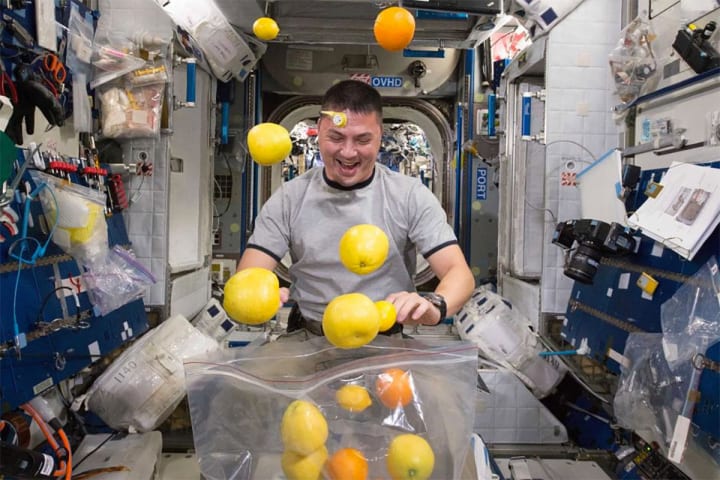
Many food supplies in the ISS can be eaten in their original form, such as brownies and some fruits, however most must be added with water; macaroni and spaghetti amongst those favoured.
There’s an oven onboard to heat food up, but there’s no fridge at all, meaning that they must store their food carefully to avoid spillages. Side note: NASA are crazy about spillages, and rightfully so. Loose packaging or crumbs could block up air vents, vital computers or even choke the astronauts, leading to some of the most dangerous situations imaginable on the ISS. Astronauts have the choice of ketchup, mustard and mayonnaise, but are not allowed powdered salt and pepper. Instead, this comes in a liquid form to prevent the whole spillage scenario.
Exercising in Space
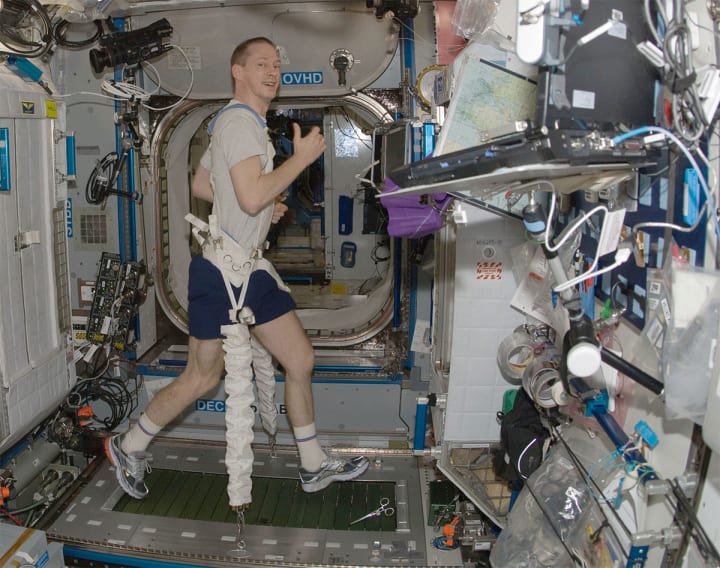
As we know ‘here on Earth’, exercise is vital for a healthily functioning lifestyle. It maintains our internal health, balanced with healthy eating and good habits, whilst also having ‘external’ benefits such as increasing our mood and making those around us happier.
Imagine exactly the same on the ISS, magnified by ten. Astronauts onboard must combat one deadly possibility; muscle and bone loss. As they operate in zero gravity permanently, muscle and bone use is far less than that on Earth. As a result, specialist exercise machines must be used.
Why? Well, lifting 200 pounds on Earth is pretty tough. Lifting that same weight in zero gravity is a lot easier. Imagine tying a whole load of helium balloons to that weight, then lifting it. To work around this, NASA created some specialist equipment, such as treadmills with harnesses, and weights utilizing anchored systems. They also recommend that astronauts exercise for two or more hour a day, more than the ’30 minute minimum’ recommended down here on Earth.
Free Time
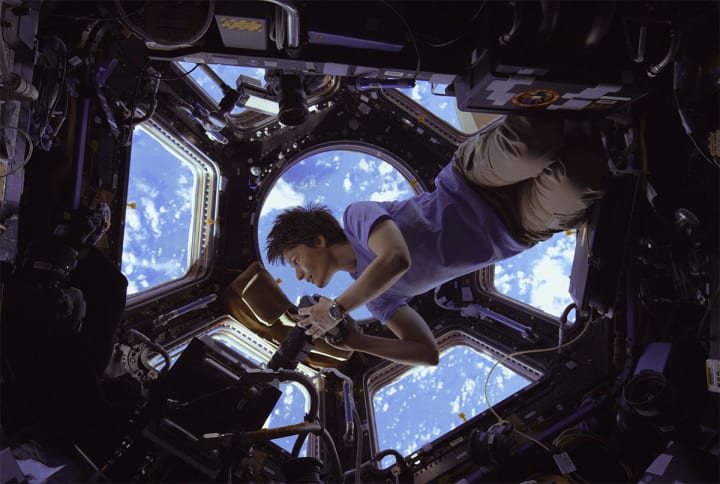
Living on the ISS is an insanely stressful experience. Not only are you a whole world away from everyone else on Earth, your weighted with some of the most advanced scientific experiments, the world’s watching eye and enclosed spaces with the same people for months at a time.
As you’d expect, they’d like a little bit of fun every now and again, which is wholly encouraged by NASA. From watching the world go by through the windows, to playing with your food and scaring fellow astronauts, almost everything has been done there.
The most favoured past-time is watching the world go by, and I don’t blame them. The sun sets and rises every 45 minutes for the ISS crew, making every hour that bit unique. Coupled with that, the astronauts can often witness some of the breaking events underneath, such as the famous ISS picture released of a visible smoke cloud emerging post-9/11.
Like us humans down on Earth, astronauts actually get the weekends off and are encouraged to watch movies, play music, read books, play cards and talk to their families. Whilst they are incredibly far away from ‘humanity’, the astronauts onboard often do feel at home with all of the comforts and encouragements made to reduce stress.
Working in Space
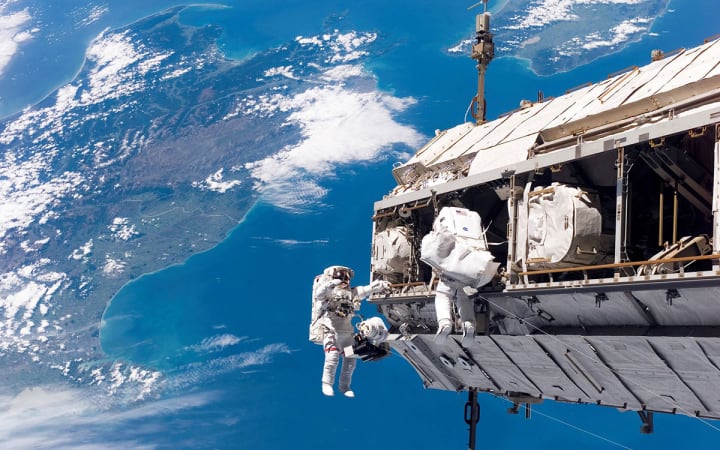
As put on the NASA website, the ISS is “essentially one giant permanent orbiting research facility”, with its main purpose to perform groundbreaking research into experiments only possible in a microgravity environment.
Most astronauts spend their day monitoring experiments that require their input, such as the seemingly fun 'how do toys work in space' or the famous 'hammer and feather' test, whilst also observing those that can be monitored from Earth, such as the growth of plants and how internal systems onboard the ISS work. Coupled with this, the astronauts also take part in various medical experiments to determine how well their bodies are actually coping with the effects of permanent residence in microgravity environments.
One of the main roles an astronaut can perform, and also by far the most dangerous, is general maintenance of the Station. Onboard, little tasks are easier to complete, such as cleaning out air filters or checking computer systems. Outside, when external components fail or require human input, ‘spacewalks’ are required, sending the astronauts into the void of space attached only by a harness. No astronaut has died through this, but there have been some famous close-calls, and it has also been subject to some of the biggest sci-fi plots in movies down on Earth, most recently ‘Gravity’.
How to Sleep in Space
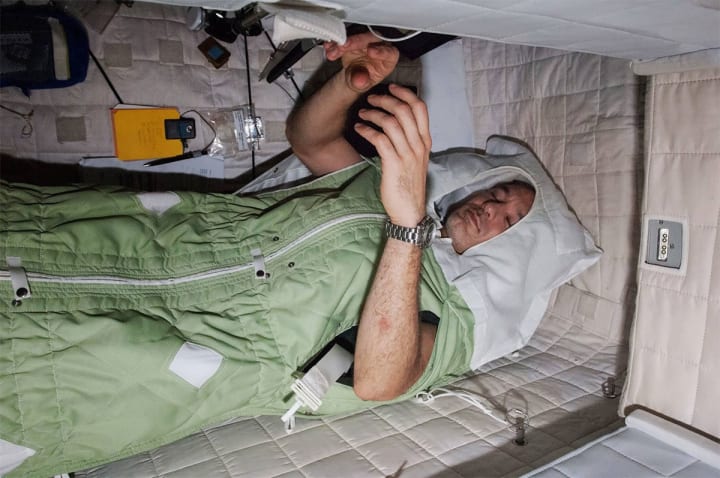
We all sleep, in fact, if we didn’t, we’d die pretty quickly. That’s common knowledge. What isn’t common knowledge is how exactly astronauts sleep in space.
As a result of the lack of gravity, astronauts can sleep in any orientation as there is no ‘up’ or ‘down’. However, as they cuddle up in their sleeping bag located in their individual cabins (just big enough for one person per cabin), they must be strapped in so that they don’t float around like a lifeless human missile.
The rest is pretty simple; they typically get about 8 hours of sleep per night, ignoring midnight toilet calls or hunger bouts, and some astronauts have even told of receiving dreams and nightmares, and hearing their peers snore! Motion sickness and excitement is quite common during an astronaut's first few days, so naturally they’re more inclined to reduced efficiency and fatigue.
About the Creator
Benjamin Wareing
Journalist and photographer. News, opinions and politics are my forte. Futuristic dystopian is my kink.






Comments
There are no comments for this story
Be the first to respond and start the conversation.